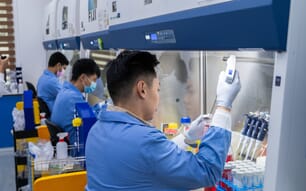These toxic substances can over time have adverse effects on human health and may cause cancer. The report reveals a general decrease in dietary exposure to dioxins and dioxin-like PCBs, comparing the period 2008-2010 with 2002-2004, of at least 16 per cent and up to 79 per cent for the general population, with a similar decrease for toddlers and other children. Exposure to non-dioxin-like PCBs, a sub-set of PCBs with different toxicological properties, also decreased.
EFSA collates and analyses data on dioxin and PCB contamination levels in relation to maximum levels which have been set for these substances for different categories of food and feed in the EU in order to protect consumers. This report, which was prepared by EFSAs Dietary and Chemical Monitoring unit, is based on some 33,000 samples collected by 26 European countries between 1995 and 2010. Levels of dioxins and dioxin-like PCBs, and of non-dioxin-like PCBs were above the permitted maximum levels in respectively 10 per cent and 3 per cent of the food samples. Just over 2 per cent of feed samples were above the maximum levels for both dioxins and dioxin-like PCBs, and non dioxin-like PCBs.
Feed and food of animal origin showed the highest levels of contamination. Meat from eels and Fish liver and derived products contained the highest average contamination levels for both dioxins and PCBs. Meat from sheep contained on average less dioxins and PCBs than meat from bovine animals. Eggs from battery hen rearing contained significantly less dioxins and PCBs than those coming from free range, organic and outdoor growing production. Farmed salmon and trout contained on average lower levels of dioxins and PCBs than salmon and trout caught in the wild. Herring, salmon and trout from the Baltic region were more contaminated by dioxins and PCBs than those from other regions.
Overall, fish, meat and dairy products were the most important food sources. However, their relative importance to dietary exposure depended on consumer age and country of residence. The major contributor to total exposure was milk and dairy products for almost all infant and toddler groups, whereas it was fish and seafood products for most of the other population groups.
On a cautionary note, the report adds that the results may overestimate food contamination and population exposure due to the targeted sampling used, while potentially underestimating exposure for some population groups since not all foods are taken into account. In addition, regional variations have not been considered as all occurrence data were merged to represent a European average.
The report recommends that future monitoring targets those foods identified as main contributors to the total exposure of the population but for which the estimations of the contamination levels were not robust. In addition, full compliance with legislative requirements for analysis and reporting would facilitate future Europe-wide risk assessments.
Report Shows Drop in Dietary Exposure Dioxins Over Last Decade
EU - The European Food Safety Authority (EFSA) has published a new report on levels of dioxins and polychlorinated biphenyls (PCBs) in food and feed. Dioxins and PCBs are persistent environmental pollutants which can accumulate in the food chain.




